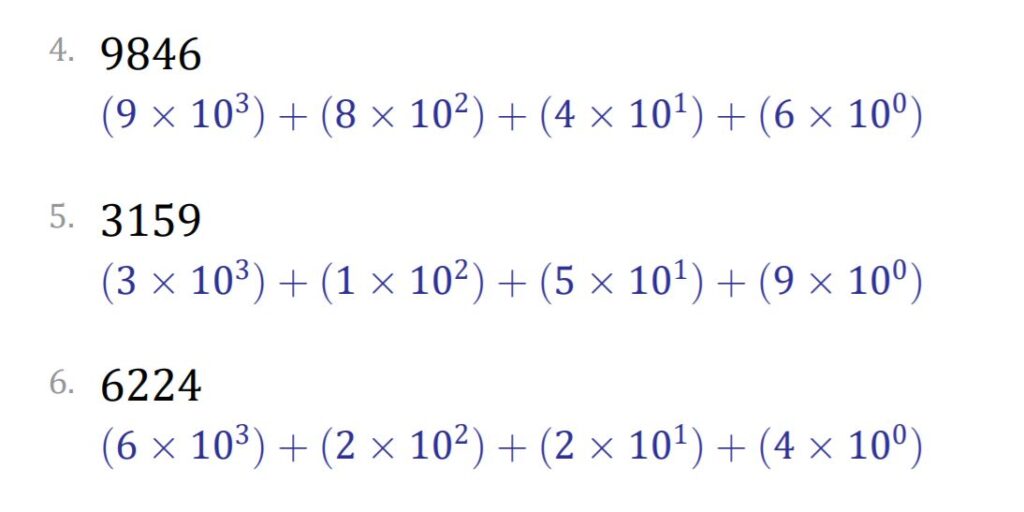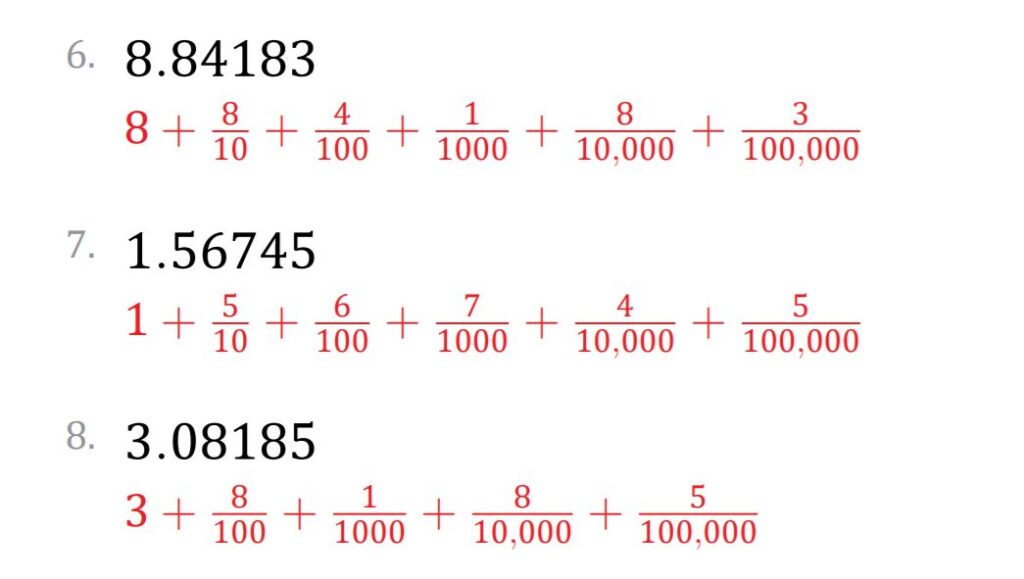I noticed recently that the expanded form math worksheets needed an update to properly recognize the different ways expanded form is written at different levels of study. This meant quite an expansion of the number of worksheets for expanded form, but the selection should now better address the diverse needs across the K-8 spectrum.
Expanded form with whole numbers comes in three main forms: expanded, expanded factors and expanded exponential. The first is what you would imagine younger students learning where a number is broken into places; for example, 931 is written as 900 + 30 + 1. Expanded factors form is written as a number of multiplication statements based on the place value of each digit. 931 in this form is written as (9 × 100) + (3 × 10) + (1 × 1). Expanded exponential form is similar to this except the powers of ten are written as powers, so (9 × 102) + (3 × 101) + (1 × 100).

Expanded form with decimals has five main forms as decimals can also be expressed as fractions. Expanded form for 3.14 could be written as 3 + 0.1 + 0.04 (using decimals) or as 3 + 1/10 + 4/100. This is also the case with expanded factors form; it can be written using decimals or fractions. Expanded exponential form with decimals is still straight forward and uses negative exponents for the decimal portions: (3 × 100) + (1 × 10-1) + (4 × 10-2).

The whole number versions on the number sense page come in all three expanded forms in three- to nine-digit numbers both converting from standard to expanded and expanded to standard forms. On the decimals page, the worksheets cover all five expanded forms from 3 to 9 places after the decimal, converting from standard to expanded and vice-versa.

